#ancient greek colonies
Explore tagged Tumblr posts
Note
I have a question I've had for a while now and i was wondering if you had any insight on it. In the Odyssey, Sicilian people are mentioned a couple of times, like Laertes' maid. Then we have Trinacria, the island of Helios with the ancient name of Sicily, as well as the island of the Cyclopes (?). So I was wondering, what reality is Homer (or the earlier tradition) trying to describe here? Sicilians as indigenous people prior to historical Mycenaean and later colonization or as Greek citizens of the forming Magna Graecia of his time? Would these Sicilians have shared their land with Cyclopes and/or the Sun god in myth?
That is a very good question. Arguably Homer mentions various locations by name for example Egypt (not only as the place of shipwreck of Menelaus but also in the Iliad Achilles says that "even if you gave me gifts as rich as in Egyptian Thebes" ) while other locations are either hinted (Tynisia for Lotus Eaters for example) or not named as some official name we recognize (Scheria, Ogygia etc) and Sicily is a famous place to check as well which is probably yet another reason why Butler suggested the theory that the woman he believed that wrote the Odyssey lived in Sicily (see my other ask)
Trinacria is by general decision placed indeed at a small island off the coast of Sicily and some accounts and researchers believe that the isle of Sicily itself is the land of Cyclops as well as the passage between South Italy and Sicily is said yo be the passage of Skylla and Charybdis due to the dangerous currents there I even had done a small research on the area while studying on greek colonies at university at postgraduate degree. The area around it is also linked to myths like the sirens as well. So yeah it does seem like Odysseus did a tour around Italy many times over hahaha 😆 even the land of Kimeria is mentioned most likely to the passage between Italy and Spain. In fact there are many people who place the land of Scheria off the coasts of Spain instead of the isle of Corfu (Kerkyra) because of the location being too far from Ithaca and fitting the homeric description.
The area of South Italy and Sicily is a precious area for the ancient Greeks for it was one of the most famous area they built their colonies (earning the name Magna Grecia aka Big Greece). The are is linked to various of myths as well including Titanomachy (Zeus vs Typhoon), Skylla and Charybdis, Sirens even as you said the Land of Helios and Aeolia. Some of the earliest colonies the Greeks had in the area was the one I studied, the placed named Pythekoussai right off the coast of modern day Napoli and was inhabited already by Homer's time.
I would say your question has one possible answer; both!
We do know the area was known to Greeks before otherwise they wouldn't have inhabited it so early. We also know that the Mycenaeans traveled a lot across the Mediterannean sea by the zenith of their palatial system (around 15th century BC). In fact people from nowadays Greece were traveling around. We discover pottery from the renounced Kamares of Minoan times to North Africa and Egypt as far back as Middle Kingdom. Depictions of Ramses's favorite wife, Nefertari, show the queen wear a silver earring that resembles a Minoan axe in shape as well (and by the way Silver was mostly an imported good in Egypt for Egypt was poor in silver) We even discovered a papyrus that is estimated to depict Mycenaean warriors working in the pharaonic army. They are drawn obviously in an egyptian style but this yellowish helmet is estimated by some to represent the boar tusk helmet.

There was also a palace that I studied during my postgraduate degree when we studied the cultural exchanges in Mediterannean sea in northern Egypt that has a Minoan decoration and is dating from the time of Hatsepsut and Tuthmoses III. It is estimated the designer must have been Minoan and either temporarily or permanently living at the area when he was commissioned this building's decorations possibly by an Egyptian.
When the Mycenaeans extended their areas of exploring in order to exchange goods they probably followed known roads. We do discover in Neolithic times for example obsidian that came only from the small island of Melos all over Europe. Probably Mycenaeans already knew some of the roads and based on products and new cultivated plants they probably did reach the coasts of Spain if not already Gibraltar (given how Atlas is said to hold the sky there). We also know or we estimated that local populations already lived there when they arrived. We do not have too many pieces of information on colonies already built at that time like remains of Cities purely greek or anything but it does seem that the locals and the Greeks interacted in various occasions.
I believe one crude way you can use to distinguish when we talk about Greeks or at least Greek influence in Sicily or any other place Odysseus visited vs totally local foreign populations is the custom of Xenia. If Odysseus visited a place and was offered hospitality according to the custom of Xenia then it seems like Homer insinuating Greeks or Greek influence to the locals. If the locals offer some different form of it or not at all or abusing it then we talk about local populations that either never met the Greeks or if they did they rejected them and their customs.
Another crude way would be to see if the area or the people are linked to some Greek God. For example Polyphemus and the Cyclops are definitely linked to Greeks through the myths such as Poseidon or the several genesis myths in mythology but they also represent the locals who know nothing of Greek culture or that they deliberately reject it aka a threat to the Greeks that are linked to possible conflict or wars between locals and Greeks when they tried to establish their culture or their commerce in the area.
For example Odysseus visiting the land of Lotus Eaters we can talk of a land that never interacted deeply with Greeks before because they are naturally hospitable people but do not know the custom of Xenia for they do not ask the strangers who they are or where they come from or offer them food and a place to stay but rather hospitable people that simply give you what they have (lotus) but they do not follow the customs. Scheria is definitely the opposite. Their story even implies a colony as they do seem to travel there and establish their city and civilization there. The customs of Xenia are impeccable in the Odyssey as they treat Odysseus eactly as the Greek Customs of Xenia. And they even recognize the employing ritual (see my other post here) when Odysseus makes a plea to the queen Arete. Polyphemus and the cyclops on the other hand represent the exact opposite. They have almost nothing of what the Greeks estimate as civilization such as agriculture and looming. Polypemus is a son f a greek god and he is aware of the laws of Xenia but he mocks them and even twists them beyond recognition. He knows what it is (he even mocks Odysseus with it when he gets drunk by asking his name after he receives his gift and then says that his own gift back is to "eat him for last") so maybe here we have a clear representation of Greeks being in the area but the local populations antagonizing or even fighting them. Circe and Calypso COULD be added to the category since both are technically goddesses thus Greek gods in the area=Greek presence in the area. Both goddesses though seem to abuse the laws of hospitality for example Circe does invite his en according to custom but she twists it and turns them into pigs holding them hostage (a possible hint of struggles between Greeks and locals and the existence of hostages? Perhaps). Odysseus has to act accordingly to save his men. But Circe is aware of the laws for not only does she do it all emplying ritual and eventually she honors the custom of Xenia to the T (perhaps a hint that the greeks eventually passed their culture in the area? Perhaps that would be me taking stuff out of a magic hat here XD)
Of course one needs to keep in mind that by the time Homer synthesized his poems, Greeks were already forming colonies. We do not know for sure if that was a thing in Bronze Age but we know they moved around for as I said before we can trace the products, toponyms such as Egypt or Ethiopia in Linear B tablets as well as the rare occasions when we discover shipwrecks (one was discovered off the coast of Turkey from Cyprus and, loaded with bronze for commercial purposes towards the Mediterannean sea, possiby Crete)
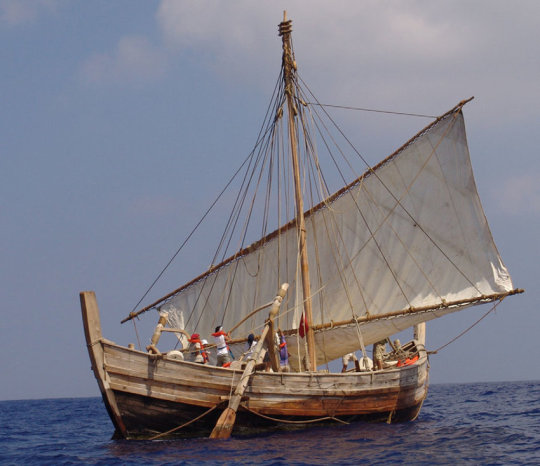
(here's an experimental replica) and we do find similar findings in the sea to connect the dots of history. So it could be partially Homer's anachronism but judging from the data he is surprisingly accurate according to period. Maybe is too early to assume that there were actual colonies of Greeks in the areas as Scheria seems to hint but I have no doubts that Greeks were already in regular contact with populations there even potentially have small settlements for better distribution of goods to the several ports.
I hope this answers your question. Sorry for the long answer.
#katerinaaqu answers#greek mythology#odysseus#tagamemnon#the odyssey#odyssey#homeric poems#the iliad#archeology#ancient greek history#ancient greek colonies#possibe hints of history in homer#sicily#mediterranean#mycenaean#ancient greece#customs of xenia#cyclops#helios hyperion#circe#calypso#scheria#phaeacaeans#ancient greek commercial in the mediterrannean#bronze age greece#bronze age mediterrannean
19 notes
·
View notes
Text
Time Travel Poll Winner Second Round Match Up
These Questions are the winners from the previous iteration.
Please add new suggestions below, if you have them, for future consideration.
#Time Travel#Pre-Colonial Americas#Indigenous History#1st Nations History#Hypatia of Alexandria#North African History#Ancient Greek#Ancient World#Roman Empire#Women in History
30 notes
·
View notes
Text
Greek Mythology and the Thing often overlooked

I have recently been thinking a lot about mythology adaptions in media, especially with the new season of Blood of Zeus being out, me finding out some interesting things, and also me reading into Greek history.
Within Western Circles it is pretty universally accepted, that everyone can use Greek Mythology as a free for all, because it is white, European culture, and we were the ones doing the colonialism and stuff. So while a white person using Japanese mythology for example can be quite iffy, it is totally fine if anyone uses Greek mythology. Because it is like part of the western canon.
Buuuuuuuut... It is kinda a lot more complicated than that, right?
The issue is, of course, that Greece is part of Europe, yes, but the Greek myths are not that widely known because Greece went around at some point pushing their gods on everyone, who would listen (like Christians do), but rather, because the Romans took those gods and myth, while they colonized Greece, and then popularized the stuff. And more than that, because later on the British Empire found those stories and was like: "Oh, this is a neat thing to build our idea of white superiority on. Hey, hey, Greece, nobody said that you are white, did we?"
Because, let's face it. In most of Europe for most of the time the Meditterrean people were not considered to be white. Including the Greece. And I mean, I kinda knew that, but I never really thought about this until recently.
The moment I actually thought about this was actually, when I was looking through the VA profiles of Castlevania, found out that Theo James was actually Greek, and went like: "Oh, that is actually really neat." And then I was like: "Why though?" And then I went: "Ooooooh."
Same happened when I realized that Blood of Zeus is actually written by Greek writers. (Mind you, I still am not a huge fan of the series, but still, I think this fact is neat.)
It is in general something I am realizing more and more. How our discourse about colonialism often lacks a lot of nuance in those regards. And because of that the discourse about stuff like cultural appropriation does, too.
Especially as cultural appropriation is already such a big, complicated issue, that is far from Black and White.
Still, considering the history, I do not think that it is fair to look at Greece in the same way we do look at the actually colonial empires like Britain, Spain, Portugal, France, Belgium and Germany for the most part. Because their history is quite a different one and a lot more complicated.
#greek mythology#greek myth retellings#blood of zeus#greece#ancient greece#greek gods#colonialism#history#colonial history#percy jackson#rick riordan
27 notes
·
View notes
Note
I don't know if here in Greece we do the same with our own artifacts and marbles, but for the British museum to own 100.000 plus artifacts and only displaying 6.000?? Yeah doesn't make any sense then not to give them back what is ours.
If fact not only it would be a smart choice but the museum could show to the world the other artifacts they have not yet shown to the world. That means people would come expecting nee stuff to see and we get our marbles.
Side note but the british museum also has The Nereid Monument, finest of the Lykian tombs found at Xanthos, in what is now SW Turkey, which is huge aside from many ancient Greek vases, small statues, plates etc.
Typically all large museums have big store rooms where they keep a lot of artifacts. Some are in maintenace, some are used for loans, some for seasonal exhibitions etc
In the museum of Ancient Olympia they have like 100 Corinthian helmets in good condition that are not exhibited at all, probably because there are, well, dozens of them, and only a handful are in the proper exhibits. Joke's on them though, I am still waiting for them to make an extra room / hall where they will exhibit all those helmets with mystical placement and lighting. Wouldn't that be cool? Besides, these helmets were offerings of ancient soldiers to the place they held sacred (Olympia), it's a pity for these helmets to be locked in store rooms for nobody to see.

But for a FOREIGN museum to do it, that's insane. And let's just say they are keeping an extra collection for the aforementioned reasons. 100 thousand artifacts?????????????? Like this can not be explained or justified no matter how hard one tries. This is some inexcusable insufferably entitled shit right there.
#greece#british museum#anti british museum#western colonialism#museums#peloponnese#ancient olympia#elis#ilia#peloponnisos#mainland#greek culture
63 notes
·
View notes
Text

The term Judaism derives from Iudaismus, a Latinized form of the Ancient Greek Ioudaismos (Ἰουδαϊσμός) (from the verb ἰουδαΐζειν, "to side with or imitate the [Judeans]"). Its ultimate source was the Hebrew יהודה, Yehudah, "Judah", which is also the source of the Hebrew term for Judaism: יַהֲדוּת, Yahadut.
The term Ἰουδαϊσμός first appears in the Hellenistic Greek book of 2 Maccabees in the 2nd century BCE (i.e. 2 Maccabees 2:21, 8:1 and 14:38) .
In the context of the age and period it meant "seeking or forming part of a cultural entity" and it resembled its antonym hellenismos, a word that signified a people's submission to Hellenic (Greek) cultural norms. The conflict between iudaismos and hellenismos lay behind the Maccabean revolt and hence the invention of the term iudaismos.

#kemetic dreams#hellen#jews#Yehudah#Yahadut#Hellenistic Greek#ancient greek#european#colonization#colonialism
16 notes
·
View notes
Note
Funniest part of the first Wonder Woman was the reveal that Ares being a dumpy looking British guy with a mustache wasn’t even a disguise, dude just looks like that
Ares, god of war, looking like an old timey British man is weirdly fitting.
#get it? bc British colonialism#greek mythology#ancient greek mythology#greek pantheon#ares#ares god of war#ares greek god#Wonder Woman#wonder woman movie
14 notes
·
View notes
Text
Alexander Balwinder Iskander Jaswinder
ever wonder why Punjabi names end in -nder or rather, why that isn’t unique to Punjabi?


#punjabi#india#aryan invasion#greek#sanskrit#ancient history#Alexander the great#macedonia#indus valley#punjab#pakistan#south asia#buddhist#buddha#alexander#jaswinder#bhangra#classical greek#colonization#colonialism#bollywood#tamil#dravidian#history#pallava#yavana#brahmin#vedism#hindu#hinduism
2 notes
·
View notes
Text
Actually that classics class was probably the most fun I had at school. Me, another bloke, and Gazza (the teacher (a woman in her 50s who toasted our sandwiches in the staffroom for us))
Like it was genuinely fun to explore ideas and discuss the language used and the ideas being conveyed, and because there was only two of us in the class we could really get into things (it was technically distance education, Gazza wasn't the teacher marking our homework, but she was the one teaching us)
And also I'm shithouse at writing anything so Gazza let me write like dozens of practice essays, marked each one and went over them for me in preparation for the final exam, and I did so well on it I was able to study ancient greek as a uni subject for my final yeah of secondary school.
We also studied sculpture from late Archaeic to early Hellenistic period, which fucked severely and I still have the poster I made to memorise those sculptures. Do revision for them was SO much fun because we had a little chant that me and the other bloke in the class made up
(also reading trojan women was an EXPERIENCE, that I should probably reread. (reading the apology was also an experience that I would prefer to forget))
#about me#i don't know that i would still want a classics degree. given i live in australia and I'd want to also have a degree in archaeology.#but studying classics and ancient greek was a beautiful thing in an extremely hard time of my life#if i WERE to go back to uni i would do archaeology focusing on australian water uses (pre-colonial & 19C goldmining)
0 notes
Text
When Cultural Appropriation is Good for Civilization
A look into cultural appropriation that attempts to temper the negative into a historical perspective.
Cultural appropriation has become a buzzword in recent years, with some claiming that it is a form of oppression that should be eliminated from society. Many people view cultural appropriation as a societal ill because it involves the adoption and exploitation of elements of a culture by members of a dominant culture without regard for the original culture’s values, traditions, and history. This…

View On WordPress
#ancient empires#antiquity#art#bias#civilization#cognitive bias#colonialism#conquest#cultural appropriation#culture#diversity#empire#genocide#greece#greek#imperialism#iran#islamic golden age#melting pot#music#muslim culture#negativity bias#nuance#oppression#persia#persian#roman#rome#science
1 note
·
View note
Text

A pair of gold bracelets decorated with garnets, amethyst, glass, emeralds, and enamel. Uncovered at Olbia, an ancient Greek colony in what is now Ukraine, 2nd - 1st century BC
from The Walters Art Museum
932 notes
·
View notes
Note
Hello! I've just found your podcast and listened into some older episodes. They helped me on my journey of understanding my sexuality, and formulate why some stories appear more sincere than others. Thank you two! In one episode that Aboriginal people are "like black people in Australia" (I hope I quote this correctly). If It's no hassle, I would be curious in understanding the social circumstnaces you are descrbing. Happily waiting for a new episode, and thank you very much for the fun and informative work!
hello there, thank you so much for listening to gayv club! I'm chuffed that you love the podcast (psst follow @gayvclubpodcast) 🥰
So, to answer your question, Aboriginal and Torres Strait Islander peoples are the Indigenous people to what the world calls "Australia". And we are Black people. We are Black people and were racialised as Black Indigenous people when British and European people colonised the land over 200 years ago. Aboriginal people were called Black throughout Australias white colonial history and so we also call ourselves Black.
Aboriginal and Torres Strait Islander peoples in this country have been subjected to anti-Black violence and genocidal policies that include but aren't limited to slavery, deaths in custody, segregation, and apartheid. Not to mention forced child removal and assimilation policies intended to "breed the Black out" of our culture.
But we're still here! Aboriginal and Torres Strait Islander peoples are the oldest continuously practising culture in the world. Recent archaeological discoveries show Aboriginal people were baking bread even before the ancient Egyptians and Greeks. As a community, we've had our own Black power movements, music movements, and art movements too.
I'm generalising a lot because Aboriginal and Torres Strait Islander peoples are very diverse. We've got over 400 languages and nations, each with its own cultural rules. While many of us have lost our language and culture because of colonisation, there are many who haven't and many working to restore and preserve it.
One thing I will make very clear is that all Aboriginal and Torres Strait Islander peoples refer to ourselves as Black (sometimes without the C) regardless of what we look like. There are many Aboriginal people, like myself, who are pale skinned and still call ourselves Black and are accepted as such. This is because we do NOT adhere to blood quantum that colonisers try to put on us. Our connection to Blackness is about our connection to family and community, it is not *only* about how we look.
Hope this helps you understand a bit. I for one am very proud to be Blak. I'm very proud to be Aboriginal. If you want to learn more about Aboriginal culture and history, here's some resources:
youtube
271 notes
·
View notes
Note
silt verses terror!au ?
i know you probably wanted an au where the silt verses characters are in the terror, but honestly the terror would work really well in the silt verses setting. you wouldn't even have to change much, just add some gods representing imperialism and the global market for the englishmen to worship (erebus, the flagship, is already named after an ancient greek deity, you could easily translate that to tsv and have the ships be in some way infused with god-power, or having prayer marks and blessings etched into their beams and sewn into the canvas of their sails, maybe fitted with saints powering them instead of steam engines), plus various personal local faiths that the men brought on board with them as protection on their perilous trip. tuunbaq could be a polar deity or the saint of one that was driven to attack the expedition by the englishmen disturbing the ecosystem with their hungry colonial gods. they'd still mostly die of scurvy - gods can't and won't save you from malnutrition.
100 notes
·
View notes
Text
The thing about oral traditions

Alright, all that rambling about the Greek Gods with Stray Gods and the godly origins... (maybe I am doing more in the next few days) It kinda brings me to a topic that I think a lot of people who do not interact with that kinda stuff a lot do not realize: Most of human history and mythology has been recorded not in the written form, but in oral tradition. That is through stories told through a story teller, through song or through (at times ritualistic) plays.
Those stories would at times be just kept within families/communities (this is your gentle reminder that the nuclear family did not arise until the 20th century), or in some cultures kept alive through a special skilled kind of tradesman. Something like bards. And even within those folks there were both the variation of people travelling the lands to collect and relay stories - or people keeping to one place and collecting stories there.
There is the very, very common misconception (that is closely linked to white supremacist believes) that written down stories are of more value, due some wrong perception of written stories being harder to alter/fake - and them being easier to date.
Don't get me wrong, yeah, if something got chiseled into some rock 1500 BC and that rock survived until today, we could absolutely read up on the rock......... if we can read the writing, that is. But... here is the thing: There have been quite a few writing systems that got lost. And also... Chances are that the rock did not survive. But maybe someone copied the text and then it was copied again and then again, because the printing press was not around for thousands of years...
You see the issue, right?
Yes, stories get altered everytime they got retold. But there is a good chance a lot of historical texts might have been altered or even faked.
Making one not necessarily better than the other.
The big issue with oral stories is, a) that orally transmitted stories are often very hard to date, and b) are often altered massively by cultural shifts, going so far that c) they get just lost.
Now, when it comes to the entire dating stories stuff, the best we basically can do is comparative mythology and the like. We can look where stories parallel each other and knowing the links between the cultures, we can then estimate how far back a story can go. But even so... see, there is this issue that with that stuff it usually goes so far into the mythical sphere that it is hard to say whether there has been a true core to things. And that is without going into the fact that we lost writing systems. The Indus Valley civilization wrote stuff down (though probably mostly like administrative stuff), but... Well, we don't know what is written there. Because we cannot read their writing.
A lot of people might have heard about the issue b) in terms of the Norse mythology. Because... yeah, other than some might think... The original mythology was lost, because the oral tradition was broken through missionary work, with the myth than being recorded by Christian folks (with a bias) already after part of the tradition was already lost. Like... We all love Loki, right? Welp, surprise, there is a chance that Loki never was actually a God in Norse Mythology.
And the Norse mythology was quite lucky in fact. Because we have some of the stuff still recorded. But there were a ton of oral cultures that just... vanished. At times because the culture vanished (for example because they died through famine, war or plague) or evolved further with the stuff shifting until it became unrecognizable (like the old Greek cultures fusing and involving into the Hellenistic culture). And at times due to outside forces (like colonizers) knowingly and deliberately forbidding the transmission of the stories.
But of course... You know. Folks tried and succeeded the latter with written stories too, trying and at times succeeding at erasing parts of history and mythology.
It is easier to study written history and mythology. But... We really gotta move away from discrediting oral traditions. Something that is still very much done in mainstream western culture. Because the oral traditions are very, very important and should not be forgotten.
#stray gods#mythology#oral tradition#oral history#ancient mythology#ancient history#norse mythology#greek mythology#colonialism
5 notes
·
View notes
Note
https://twitter.com/FreshSummerWind/status/1623961164416688130?t=yNPRu014GXgk50jAvxCIXg&s=19
It's a small clip but as a Greek i didn't know that this man did it to Sparta and other regions in Greece..i mean why does it brought him joy destroying ancient ruins? For what? France? It makes no sense and it's sad because they took advantage of Greece being occupied by the ottomans back then they did as they pleased.
Call it envy? Jealousy? I have no idea why destroy history. Thankfully now archeologists fixed many ruins but still..
So when I first saw this, I was convinced it was some hoax, because I couldn’t wrap my head around it. But no. It really is true. I searched Wikipedia about this asshole.
The video is about French priest Michel Fourmont (1690–1746).
“He was one of the scholars sent by Louis XV to the eastern Mediterranean to collect Byzantine inscriptions and manuscripts. He is now best remembered (what a phrasing, wiki) for the destruction of antiquities in Ancient Sparta and for having presented as genuine some forged inscriptions.
Fourmont made collecting ancient Greek inscriptions his primary focus. Fourmont would report to Count Maurepas that he copied 1,500 ancient inscriptions (300 in Sparta). His technique was brutally direct. Workmen were hired to dismantle any structure that might contain ancient stones with letters on them. Fourmont reported paying 1,200 man-days of labour to dismantle monuments in search of ancient marbles. In a letter to Bignon dated 20 April 1730, Fourmont wrote:
For more a month, although ill, I am working with 30 laborers for the complete destruction of Sparta; hardly a day goes by without finding something, and some days have produced as many as 20 inscriptions. If I could do at Tegea, Antigonia (Mantineia), Nemea and one or two other cities what I have done at Hermione, Troezen, and Sparta, it wouldn't be necessary to send anyone here. There would be nothing left. I have not been able to knock down the remains of the former places, because of the plague, without which they would be totally destroyed. For lack of books, these destructions shall be the only way to make illustrious a voyage which has caused such a stir. (…) Speaking frankly, I myself am astonished at this expedition. I have read nowhere that, since the restoration of literature, anyone has had the idea of turning whole cities upside down to find these marbles, which are the only irreproachable evidence of antiquity, the only things capable of shedding light on the dark corners of history, of the administration and religion of ancient peoples. Only in this manner can one contribute usefully to science. So convinced am I that Sparta is the fifth city of the Morea I have destroyed. Hermione and Troezen have had the same fate. I have not spared Argos, Phliasia, and some others. I am currently working to dismantle the temple of Amyclaean Apollo down to the foundation stone. Every day one finds things you will be pleased to see. ... I would destroy others with the same ease if I were left to do so.
Fourmont was called back to France before he could visit ancient Olympia as planned. (Thank God). Later travelers to Greece were horrified at Fourmont's descriptions of the ancient monuments he destroyed. Fourmont is alleged to have written in one of his letters that he had destroyed certain inscriptions after transcribing them. The British traveler Edward Dodwell reported that when he visited Sparta (in 1806) he was shown marbles that Fourmont had mutilated so as to make their inscriptions illegible. That some of Fourmont's most important inscriptions from Amyclae could not be relocated helped fuel scholarly suspicions that he had either forged or seriously misrepresented the inscriptions he reported.”
Like, this is an actual person that existed. Not a Disney villain.
And for some visual context:

What’s left of Ancient Sparta
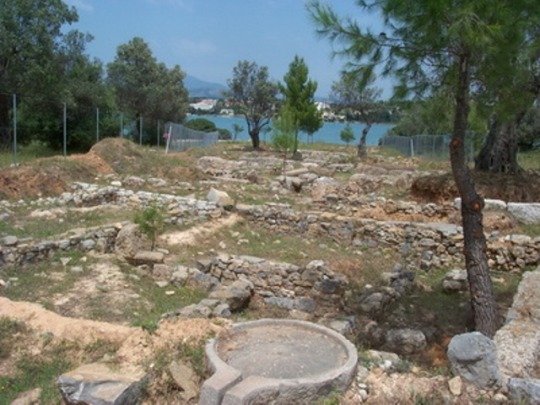
Ancient Hermione
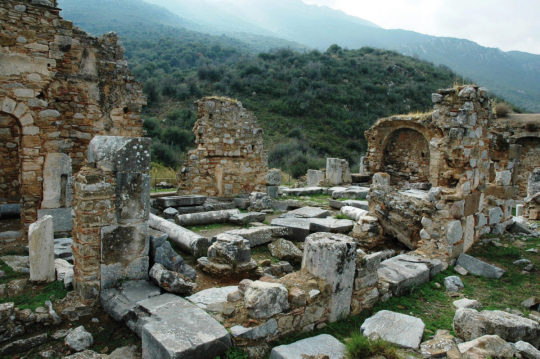
Ancient Troezen
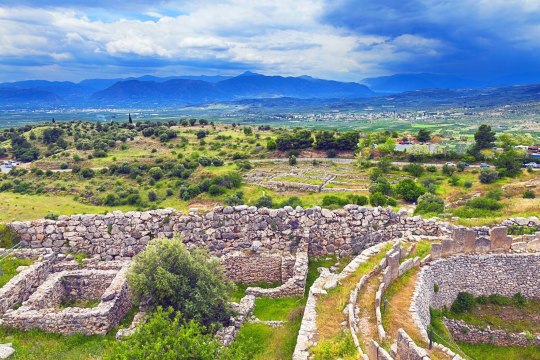
In case you wondered why mighty and famed Argos isn’t a better known archaeological attraction like others, apparently we have this gent to thank
#Greece#ancient greece#western colonialism#Ancient Greek ruins#history#greek history#Sparta#Laconia#peloponnese#peloponnisos#mainland#anon#mail
74 notes
·
View notes
Text
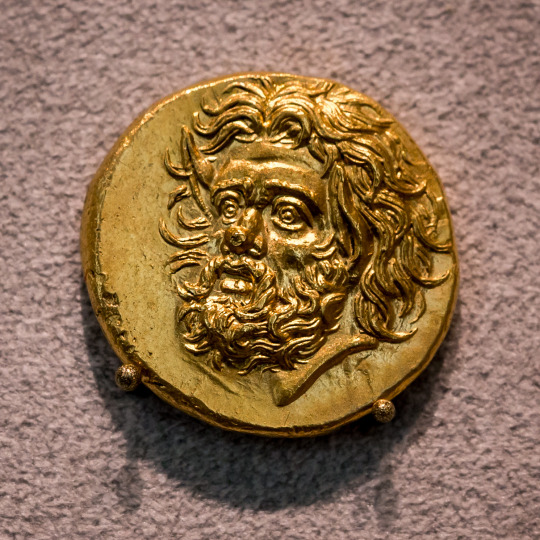
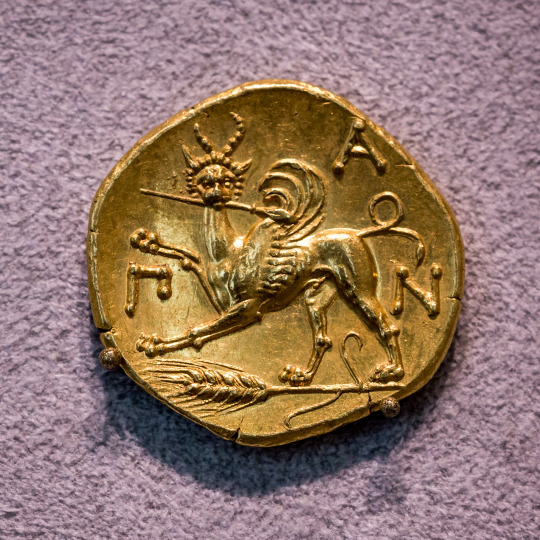
Gold stater (diameter=18 mm; weight=9.09 g) from the ancient Greek city of Panticapaeum, a Milesian colony on the Black Sea. The obverse bears the head of the god Pan, shown in three-quarter view and crowned with ivy. The reverse depicts a griffin with a spear in its mouth, standing on an ear of grain (the Black Sea region was an important center of grain production for the ancient Mediterranean world). Around the griffin are the Greek letters ΠΑΝ. Now in the Münzkabinett der Staatlichen Museen, Altes Museum, Berlin. Photo credits: ArchaiOptix/Wikimedia Commons.
#classics#tagamemnon#Ancient Greece#ancient history#art#art history#Greek art#Ancient Greek art#Panticapaeum#Greek religion#Ancient Greek religion#Hellenic polytheism#God Pan#coins#ancient coins#Greek coins#Ancient Greek coins#stater#numismatics#ancient numismatics#metalwork#goldwork#Altes Museum
411 notes
·
View notes
Text
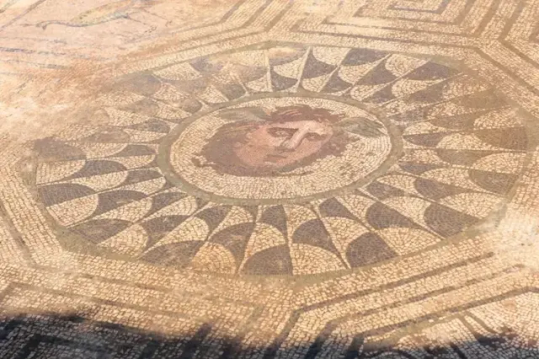
Archaeologists Unearth Ancient Mosaic of Winged Medusa in Spain
The stunningly preserved Ancient Roman mosaic floor was found at the Huerta de Otero site in the city of Mérida.
In both ancient and modern interpretations, Medusa is often known as a monster — a Gorgon with tresses of serpents whose stare turned men to stone. This version typically appears in children’s movies and fantasy thrillers, but her image hasn’t always been so awe-inspiring. In late June, archaeologists in Western Spain uncovered an Ancient Roman mosaic floor that depicts Medusa with tiny wings and flowing locks of hair, thought to have been used as a protective symbol.

The mosaic was found in the city of Mérida’s Huerta de Otero archaeological site. Ancient Romans established a colony there in 25 BCE named Augusta Emerita. Traces of its former inhabitants — including an amphitheater and a bridge — can be found throughout the modern-day city. “[The site] is of an exceptional nature due to the level of conservation of the ruins and, above all, the ornamental elements that decorate the well-preserved house: not only the mosaic of the Medusa but also paintings and sculptural motifs,” said archaeologist Félix Palma in a statement.
The Huerta de Otero location was excavated in 1976 but lay untouched for decades. Research picked back up in 2019, when the city employed professional archaeologists and students from its Barraeca II Professional School to explore the ruins. Since then, the team has uncovered an Ancient Roman defensive wall, a road, and the home of a wealthy family.
The Medusa mosaic adorned the floor of this home. Depictions of fish, peacocks, and carefully tessellated patterns surround the artwork’s central figure: a human-like Medusa, her gaze turned to one side.


Although this image diverges from some contemporary renditions of the mythological figure, the mosaic’s winged version was common in Ancient portrayals of Medusa. While early Greek depictions of the mortal-turned-monster, cruelly punished for being raped by the god Poseidon, show her as grotesque, Medusa’s image softened by the time of the Ancient Romans. Beginning in the Classical Greek period, her face acquired more human attributes. It started to be rendered with symmetry and youthful beauty in the following centuries.
Other Ancient Roman mosaics featuring the head of Medusa have been discovered throughout Spain. Medusa again comprises the focal point of an Ancient Roman mosaic in a 115–150 CE work found in Rome, where she can be seen sporting human curls and a snake around her neck. A 1st-to-2nd-century ornament from a chariot pole shows a young woman with curly locks (although a couple of snakes still peer through her tangle of hair).
In Ancient Greek mythology, Perseus killed Medusa to avoid being turned to stone. Medusa, in her early terrifying form, was used as a protective symbol — “an image of evil to repel evil,” Madeleine Glennon writes in a 2017 essay for the Metropolitan Museum of Art. The goddess Athena famously included a representation of Medusa’s severed head on her protective cloak or aegis. In Ancient Rome, her beautified image was still employed as a protective symbol, although the depiction shifted into a form more similar to a woman than a monster.
By Elaine Velie.
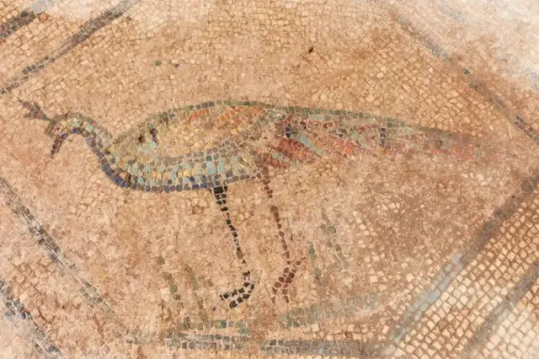
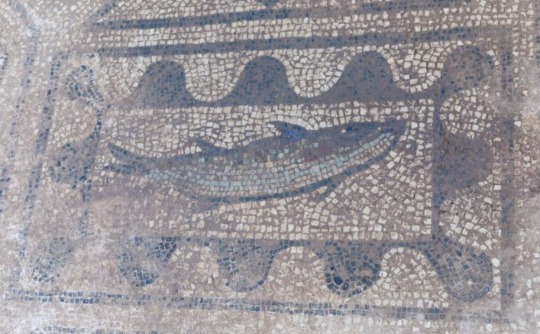
#Archaeologists Unearth Ancient Mosaic of Winged Medusa in Spain#mosaic#roman mosaic#Mérida Spain#Huerta de Otero archaeological site#ancient artifacts#archeology#archeolgst#history#history news#ancient history#ancient culture#ancient civilizations#roman history#roman empire#roman art
609 notes
·
View notes